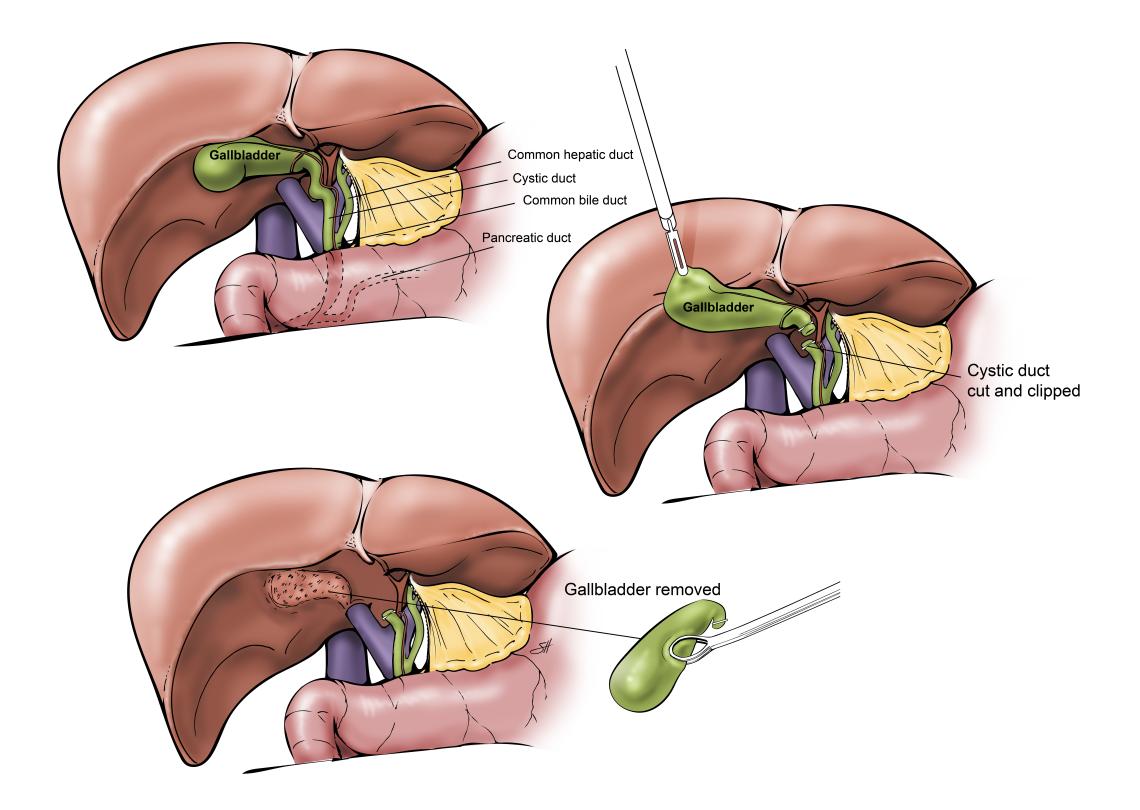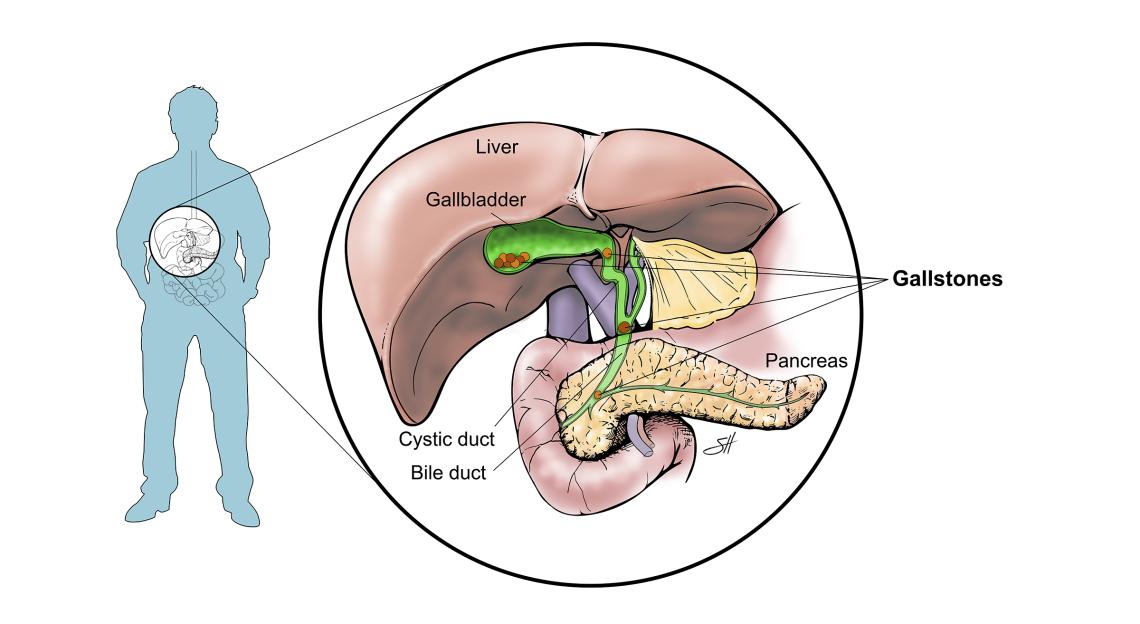What is cholecystectomy?
Cholecystectomy (ko-luh-sis-TEK-tuh-mee) is a type of surgery that removes a diseased gallbladder.
This surgery is usually done as a laparoscopic surgery. The doctor puts a lighted tube and other surgical tools through small cuts (incisions) in your belly. The tube is called a scope. It lets your doctor see your organs so he or she can do the surgery. The incisions leave scars that fade with time.
Most people go home the same day. You probably will feel better each day. Most people have only a small amount of pain after 1 week. If you have a desk job, you can probably go back to work in 1 to 2 weeks. If you lift heavy objects or have a very active job, it may take up to 4 weeks.
In some cases, open surgery is the best choice. Your doctor may choose open surgery in advance. Or he or she may choose it in the middle of laparoscopic surgery. In open surgery, the doctor makes a larger incision in your upper belly. If you have open surgery, you will probably stay in the hospital for 2 to 4 days. And it may take 4 to 6 weeks to get back to your normal routine.
How is cholecystectomy done?
Cholecystectomy is usually laparoscopic surgery. To do this type of surgery, a doctor puts a lighted tube, or scope, and other surgical tools through small cuts (incisions) in your belly. The doctor is able to see your organs with the scope. After your gallbladder is removed, you will no longer have gallstones. The cuts leave scars that usually fade with time.
Open surgery may be done if problems are found during laparoscopic surgery. With open surgery, the gallbladder is removed through one larger cut in your belly. And the hospital stay is longer.
Laparoscopic gallbladder surgery for gallstones: Overview
Laparoscopic gallbladder surgery (cholecystectomy) removes the gallbladder and gallstones through several small cuts (incisions) in the abdomen. The surgeon inflates your abdomen with air or carbon dioxide in order to see clearly.
The surgeon inserts a lighted scope attached to a video camera (laparoscope) into one incision near the belly button. The surgeon then uses a video monitor as a guide while inserting surgical instruments into the other incisions to remove your gallbladder.
Before the surgeon removes the gallbladder, you may have a special X-ray procedure called intraoperative cholangiography, which shows the anatomy of the bile ducts.
You will need general anesthesia for this surgery, which usually lasts 2 hours or less.
After surgery, bile flows from the liver (where it is made) through the common bile duct and into the small intestine. Because the gallbladder has been removed, the body can no longer store bile between meals. In most people, this has little or no effect on digestion.
In 5 to 10 out of 100 laparoscopic gallbladder surgeries in the United States, the surgeon needs to switch to an open surgical method that requires a larger incision. Examples of problems that can require open rather than laparoscopic surgery include unexpected inflammation, scar tissue, injury, and bleeding.
© 2016-2019 Healthwise, Incorporated.







 Credit
Credit

